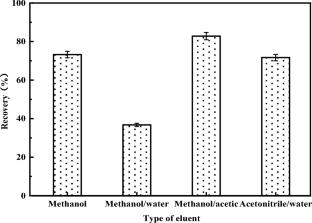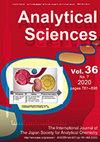Reusable magnetic molecular imprinted polymers based on magnetic graphene oxide for selective identification and detection of eugenol in environmental water samples
Abstract
In this study, a reliable method for determining eugenol content in environmental water samples was established by combining magnetic solid-phase extraction with high-performance liquid chromatography. Magnetic molecular imprinted polymers MGO@MIPs were prepared through surface molecular imprinting technique with eugenol as the template molecule. The material displayed good superparamagnetic properties and magnetic responsiveness in favor of rapid separation. The adsorption properties of MGO@MIPs for eugenol were evaluated through adsorption kinetics and selectivity experiments. MGO@MIPs were found to have favorable reusability and obvious selectivity for eugenol. In addition, adsorption and elution conditions were investigated. Under optimal conditions, a linear relationship was obtained between the concentration of eugenol and its peak area in the range of 0.02–5 mg/L (R2 = 0.9998) and the limit of detection was 4.0 × 10–6 mg/mL. The performance of the established method was assessed with the average recovery of 96.59–102.20% and the relative standard deviation (RSD) below 3.5%. The application of this method provides a new perspective for the separation, enrichment and detection of eugenol in water environment.
Graphical abstract
Preparation of the molecularly imprinted polymers


 求助内容:
求助内容: 应助结果提醒方式:
应助结果提醒方式:


